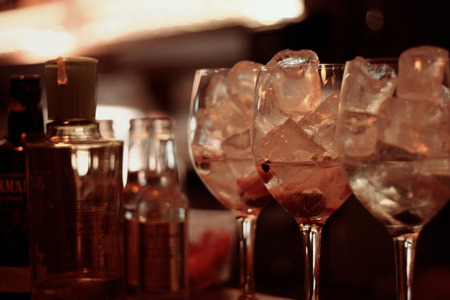How The Spanish Gin Tonic Won Me Over
Cultural hubris is such a dangerous thing.
Exhibit A: for nearly a year, it prevented me from enjoying what is one of life's greatest pleasures: the Spanish gin and tonic. Aka the gintonic (pronounced yeenTOEneek).
You see, my problem was that I failed to recognize that this cocktail is not synonymous with our gin and tonic. Yes, the ingredients are the same. But it is a cousin at best....how else do you explain the totally different drinking experience?
Start with THE TIME. I'll never forget, early in my Spanish sojourn, calling a Basque friend of mine at the 5 o'clock hour. With a gin and tonic in hand. "Qué haces?" he says. "Drinking a gin and tonic," I say. "A estas horas? Estás loca?" He couldn't believe it. Because a gintonic is for after a meal, after dessert, after coffee, to end it all, be it a long, luxurious lunch or a weeknight dinner out.
Then, THE GLASS. Spaniards always use either a big, bulbous glass similar to one of those obnoxious wine glasses, or a cider glass. I used to prefer the latter, just to keep a low profile. Now I feel natural with one of these wacky glasses in hand.

Then, the GIN. This should be obvious, and of all the things that separate a gintonic from a gin and tonic, this is the least different. In the states there is a good selection of gin, just as in Spain. But....I would wager that of bars of the same level, Spanish ones have a wider selection of gins.
Next, the GARNISH. Another sore point for me, as many bars use lemon instead of lime in Spain, which I find apalling. However, the citrus they do use they use it well. Instead of a slice, which practically demands that you squeeze it into the drink, you get a piece of the skin. No pulp, just skin. And, should you be in a bar that is of a slightly higher level, you could potentially get juniper berries as an additional garnish. One more level up, you might be getting different garnishes for different gins: cucumber for Hendrick's, strawberries for Brockman's.
Then, the all important METHOD OF PREPARATION. In the US: ice, gin, tonic from a spout straight in the glass, lime slice on cup. IN SPAIN, when it's done right, the gintonic goes a little something like this: Pour gin in glass. Add garnish, take your sweet time to give said garnish time to mix a bit with the gin. If the garnish is an herb, give it a slap or two to get the oils flowing. Add huge ice cubes to glass. Pour tonic in, slowly, using something such as a long handled spoon to break the bubbles.
Finally THE TONIC. A point that is still iffy on both terrains. In the US, you are likely to get tonic from a spout. That tonic will be Schweppes, if you're lucky, and made with corn syrup. In Spain, you will probably get Schweppes, made with real sugar, from a bottle, since there is a glass trading program that gives them money back every time they recycle a glass. The difference in taste is impressive. Fever Tree is the second most common tonic, which makes me very happy. It's the darling of Imbibers Who Care worldwide, from Boucherie in New Orleans to Vinateria en Donostia. Only slightly sweet, citrusy, never overpowering. Just wonderful. Drink in gallons. Also love Stirrings. See 'How to Mess Up a Gin & Tonic'.
After two years, my professional opinion has evolved to be: gin and tonic: YUCK. gintonic: mmmmm.
